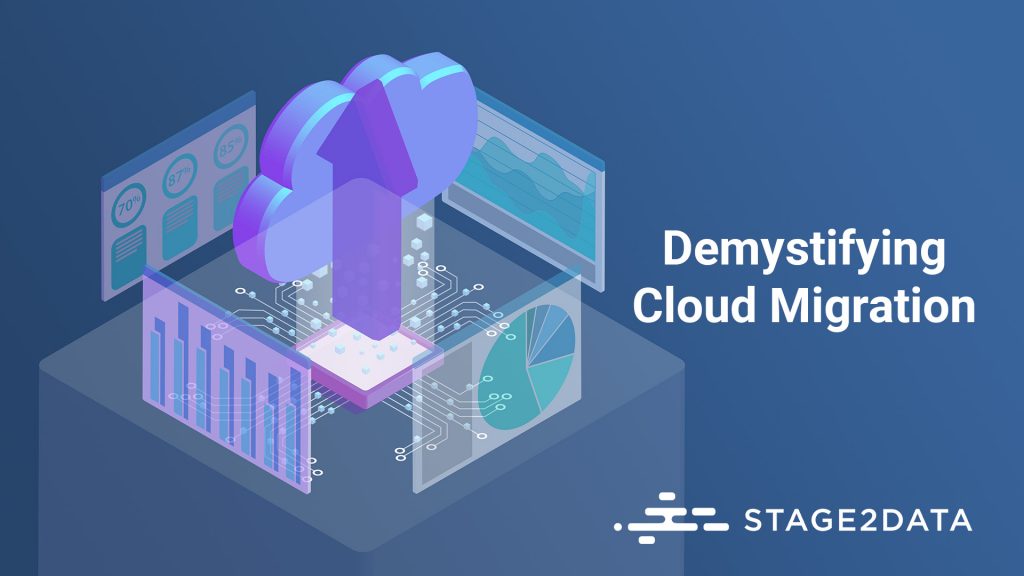Cloud migration is often seen as a colossal task with a myriad of risks involved. Not to mention finding a cloud service provider you can trust.
Moreover, facing the inevitable downtime and resistance from teams reliant on old systems can be overwhelming. Add to that the fear of data loss and the daunting task of migrating years of accumulated data and systems, and you have a situation that needs careful planning, effective communication, and a strategic approach to ensure a smooth and successful integration.
But what happens if your decision to migrate to the cloud leads you to a subpar cloud service provider?
Let’s have a look at the challenges that come with this scenario and, more importantly, the available solutions and what you should look out for when choosing your next cloud solutions provider.
Why Organizations Choose to Migrate Cloud Service Providers
By now, most organizations have either partially or entirely migrated their data and servers to the cloud.
This move should have been a game-changer for a number of reasons:
- no need to pay for expensive hardware;
- the freedom to scale your resources as your business grows;
- robust data security measures that include encryption, regular security updates, and ransomware protection;
- and many solutions let you pay only for what you use.
Unfortunately, not everyone has had a good cloud migration experience, which can be due to a number of reasons:
- Poor service delivery
- Vendor lock-in and stringent SLAs
- Cost management
- Security breaches
Let’s look at each of these challenges and what you can do to address it.
Some Common Challenges Migrating to a New CSP
While migrating to a new cloud service provider can open up a world of possibilities, let’s not kid ourselves — there are real challenges involved. Here are some of the most common challenges and solutions to overcome them:
Challenge #1: Costs
While migrating to a new cloud provider may offer cost savings in the long run, the initial migration process can be expensive due to factors such as data transfer costs and setup fees.
Challenge #2: The Risk of Downtime
Any downtime during the migration process can result in significant losses for a business, making it crucial to plan and execute the migration carefully.
Challenge #3: Data Transfer and Integration Issues
Transferring large amounts of data between cloud environments can be time-consuming and costly, especially if the provider uses a different file system or data format.
Challenge #4: Vendor lock-in
Vendor lock-in, can be a complex challenge. When you become too heavily reliant on a specific cloud service provider, making the transition to another one can be both costly and disruptive. The risks often include difficulties in transferring data, applications, infrastructure, and ensuring the knowledge transfer of human resources. Inefficient processes, stringent SLAs and other limiting conditions can contribute further to vendor lock-in.
Challenge #5: Security Concerns
Ensuring application and data security is a top priority for organizations when migrating to a new cloud provider. This includes evaluating the provider’s security measures, policies, and compliance with regulations.
So, while it’s clear that there might be bumps in the road, they’re navigable, and you can overcome them by:
- conducting a thorough assessment of your current setup, identifying gaps, and determining the best approach for migrating to a new cloud provider;
- seeking expert advice from a reputable cloud service provider;
- evaluating providers based on their services and pricing;
- ensuring that the new provider offers the necessary features and functionality to support your organization’s needs;
- planning for potential downtime and have a contingency plan in place to minimize the impact on the business during the migration process.
Importantly, amid the challenges lies the promise of data protection, enhanced flexibility, scalability, and accessibility inherent to cloud computing.
A Practical Guide to
Cloud Backup
How to Choose the Right Cloud Migration Solution
The key is to approach the process with a clear understanding of the potential challenges and a commitment to implementing effective solutions.
To make sure you do, here are some factors you have to keep in mind to make the transition as smooth as possible:
- Migration Goals: Before choosing a cloud migration solution, it’s important to define your migration goals and objectives clearly. This will help you select a solution that aligns with your business needs and long-term strategy.
- Infrastructure Changes and Performance: Evaluate your current infrastructure and assess its compatibility with the cloud environment. Consider factors such as legacy systems, dependencies, and performance requirements to choose a solution that can address these challenges.
- Security and Compliance: Security is a critical consideration when choosing a cloud migration solution. Ensure that the solution provides robust security measures, data encryption, and compliance with relevant regulations to protect your sensitive data.
- Provider Experience and Expertise: Consider the experience and expertise of the cloud migration solution provider. Choose a provider with a proven track record that can offer the necessary support and guidance throughout the migration process.
- Cost and ROI: Evaluate the total cost of the migration and consider the return on investment (ROI) of the chosen solution. Look for a solution that offers cost-effective plans and services tailored to your business needs.
- Disaster Recovery Capabilities: Assess the disaster recovery capabilities of the cloud migration solution. Ensure that it can provide reliable cloud backup solutions and recovery options to minimize potential disruptions during the migration process.
Final Thoughts
The decision to migrate to a new cloud service provider requires careful consideration, especially considering the potential pitfalls such as poor service delivery, vendor lock-in, cost management, and security breaches.
To mitigate the risks of this migration, you must always do your due diligence and plan exit strategies in advance. You should also seek out expert advice, evaluate providers, and plan for downtime. But, most importantly, the key to success lies in choosing a migration solution (and service provider!) that aligns with your goals.
Embracing cloud migration (and even migrating to a new cloud service provider) presents a transformative opportunity for your organizations, where the advantages far surpass the inevitable challenges.





